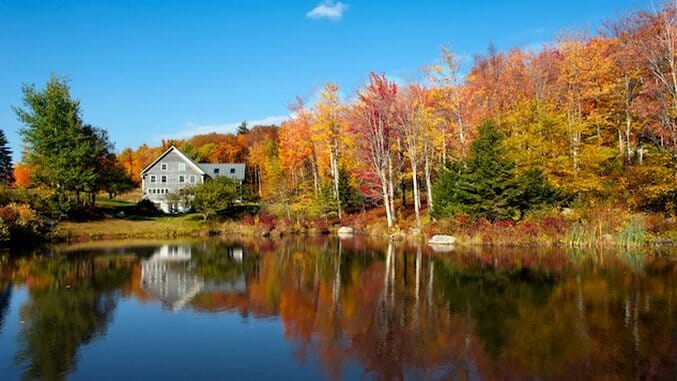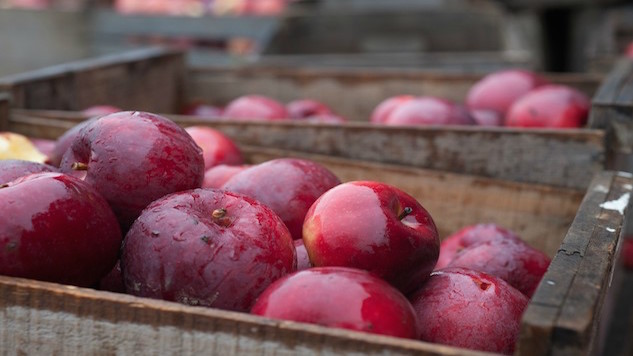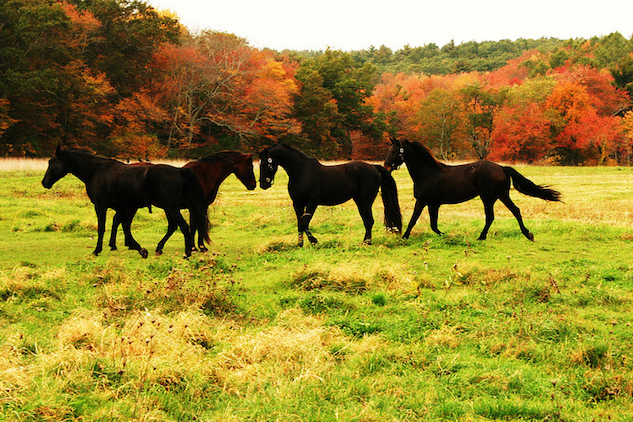8 Non-Cliché Ways to Spend Fall in New England
Photo below courtesy of MASS Tourism Travel Lists New England
As beautiful a picture the colorful collection of red, yellow and orange leaves make painted against a lighthouse speckled coastline, there’s more than just leaves to enjoy during autumn in New England—the place to be for fall foliage. As long as you’re outside enjoying the crisp weather, you’re getting the best of the Northeastern United States’ fall.
For something a little interesting and far off the beaten path (which means less tourists and more Stars Hollow-eque towns), skip the normal leaf peeping routes and turn over a new leaf with our tips. And don’t worry, there’s still plenty of foliage to be found.
1. Tour Abandoned Towns
 Photo courtesy of MASS Tourism
Photo courtesy of MASS Tourism
The Wild West isn’t the only place in America home to abandoned towns. New England is has more than a dozen of these spooky sites all throughout the region. In Maine, you’ll find Perkins—a creepy seaside fishing village that was fully abandoned in the 1940s. Although efforts have been made to preserve the haunting buildings, the area is still relatively devoid of human civilization.
Dating back to the colonial times, Hanton City, Rhode Island is now just a collection of stones buried beneath piles of crunchy leaves. The history of the town is highly controversial—with some people believing runaway slaves settled the area while others think it was used solely to quarantine those sick with infectious diseases.
In Massachusetts, the town of Whitewash Village was, quite literally, blown off the face of the earth due to a massive hurricane in the 1900s. Over 200 people are said to have perished, and now, the only remainder of life is the historic lighthouse.
2. Hit the Desert
 Photo courtesy of Desert of Maine
Photo courtesy of Desert of Maine
Amid lush changing leaves, thick pine forests, staggering mountains and limestone cliffs sits one of Maine’s quirkiest attractions: a desert. This 40-acre natural attraction was created entirely by glaciers that carved the surprising sand-filled valley and dunes tens of thousands of years ago. From touring the sands on a 4×4 to exploring the phenomenon on foot, there are plenty of ways to soak up this weird space outside of Freeport. Plus, in autumn, the myriad colors provides a stunning contrast to the stark yellow sand and silt.
3. Discover America’s Stonehenge
 Photo courtesy of Angela M
Photo courtesy of Angela M
Nestled at the summit of Mystery Hill outside of Salem, New Hampshire sits one of America’s oldest archeological sites, Stonehenge. Like the historical rock formations of the same name in England, this collection of stones is said to date back up to 4,000 years. The story of this sight, which looks more like a mish-mosh of shapes than anything spectacular, is an uncovered one. Historians have been trying to trace these structures back to early civilizations, but the theories still remain muddled and shrouded in mystery. Was it built for ceremonial purposes? Was it a site for scarification or religion? Were some cave kids building a fort? Although the answer may never be found, the attraction is still fulfilling, especially when flanked by the colorful trees.
4. Try You Hand at Falconry
With lush forests surrounding nearly all sides of the Equinox Resort in Vermont, logistically it makes sense that the hotel offers falconry lessons from Master falconer Robe Waite. This age-old tradition was created as a sport and as a necessity—the falcons would be taught to hunt for their masters. Although the sport isn’t widely practiced in the U.S., it’s become a popular past time during orchard season at the Equinox. The activity itself is rather simple, but takes patience and a steady hand. Besides the fact that you can say you’ve falconed with a master, you also get a bird’s eye view (pun intended) and a front row seat to Vermont’s world famous foliage.
5. Sample & Sip Boozy Ciders
 Photo courtesy of MASS Tourism
Photo courtesy of MASS Tourism
If you want the nation’s best cider, you have to go where the best apples are grown, and that’s New England. All around the region, apple orchards are pressing, fermenting and bottling their hard ciders to the masses. Once a drink only enjoyed by people with allergies to gluten, hard ciders have quickly become the go-to drink for fall (alongside the pumpkin spice latte). These ciders, which are pressed from a variety of New England grown apples ranging from Granny Smith to McIntosh and Empire, are sold at nearly every supermarket. In Cambridge, sip Bantam Cider, a delicious blend of three types of apples all mixed with peppercorn and sour cherry juice. For a more traditional cider, stop by Citizen Cider in Burlington, Vermont, where each bottle is packaged with just a hint of ginger.
6. Explore a Castle
Brexit have you rethinking your UK visit? Skip the flight and the jet lag and head to New England to get your castle fix instead. The Gillette Castle, which sits on the banks of the rushing Connecticut River, once belonged to famed actor Arthur Gillette. Built in 1914, the castle is now a working museum and park, allowing guests to practice their best Downton Abbey impressions whilst exploring the rather expansive mansion and accompanying towers. Just make sure you hike the two-mile Gillette Castle Trail, a secret little hideaway that boasts 180-degree views of the river and the surrounding amber hued forests.
7. Go on a Safari

Photo courtesy of MASS Tourism
The wild, expansive plains in Africa aren’t the only places you can embark on a wildlife safari. New England is home to an incredible variety of wild species, ranging from the world-famous Clydesdale Horses, who live in Merrimack, New Hampshire, to black bear and moose in the lush forests of Acadia National Park and White Mountain National Forest. If you’re looking for an actual safari, embark on an adventure with Action Adventure through Goshen, Connecticut—where you’ll meet a range of indigenous and exotic animals, like llamas and wildebeest.
Claire Gallam is a seasoned writer and photographer with a passion for food and travel. She has spent time in more than 40 countries and hundreds of cities.